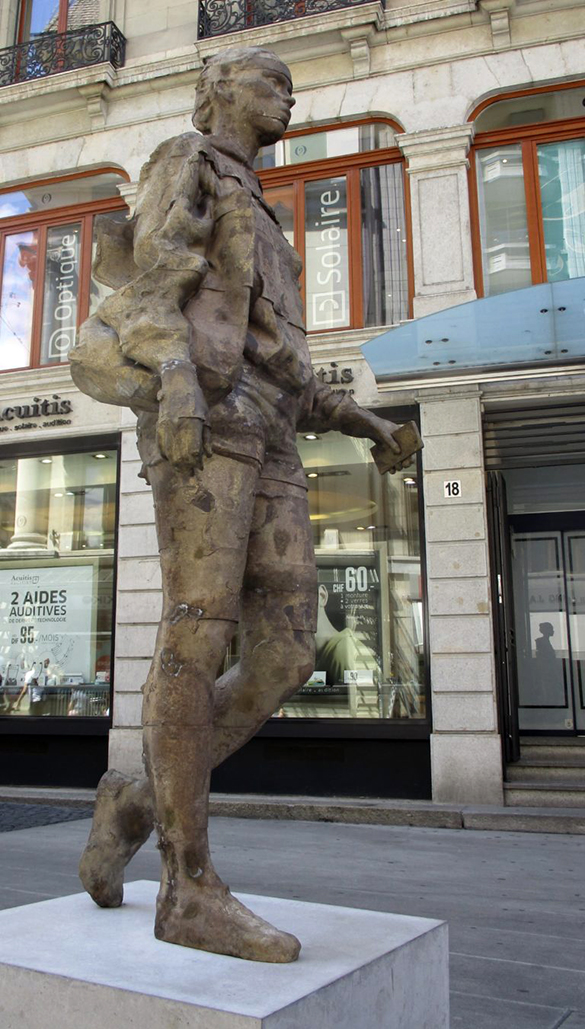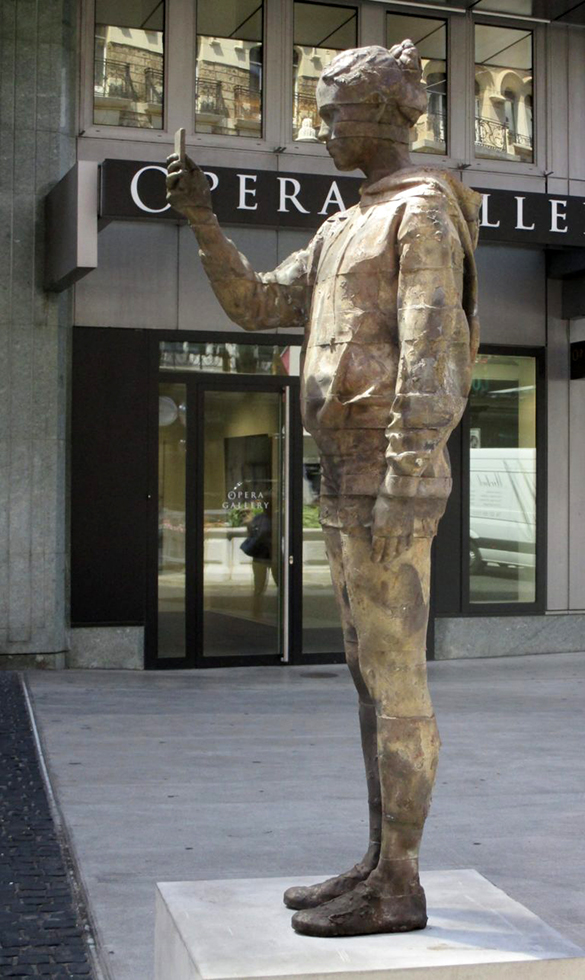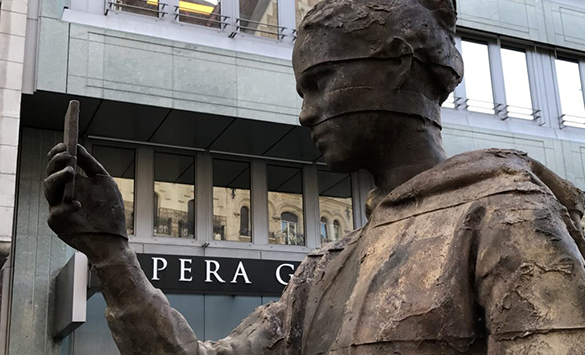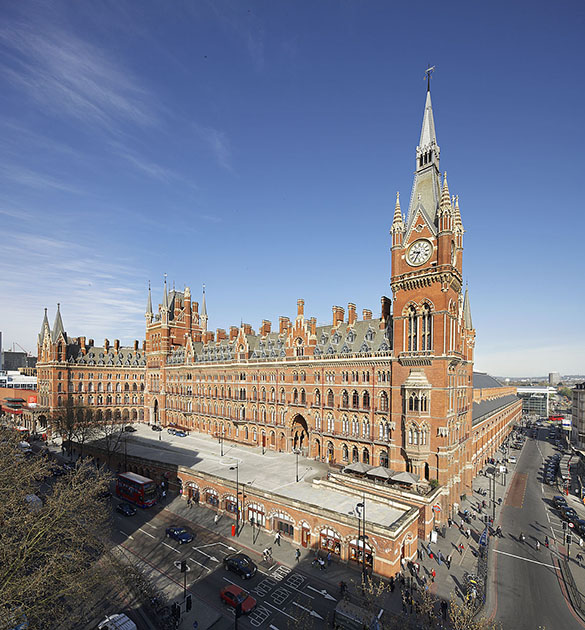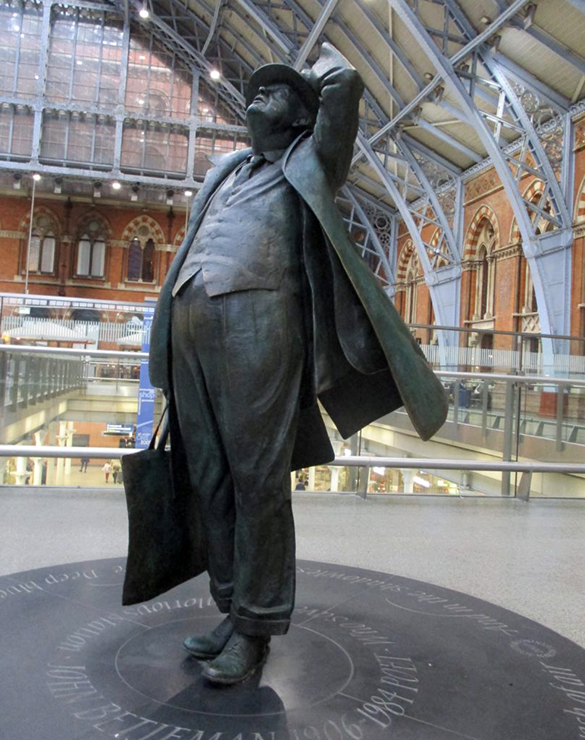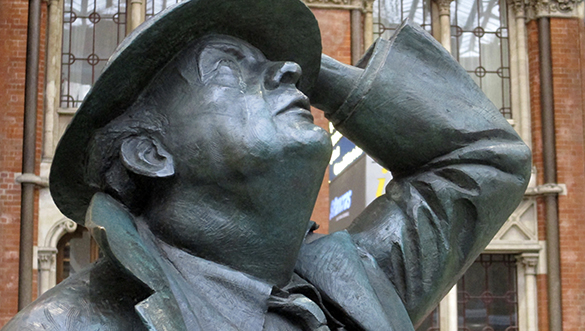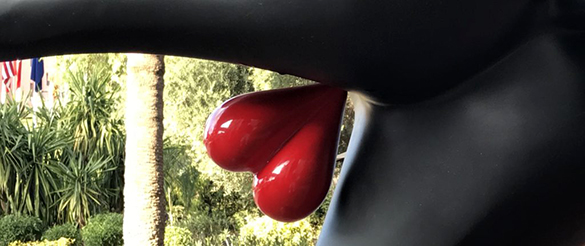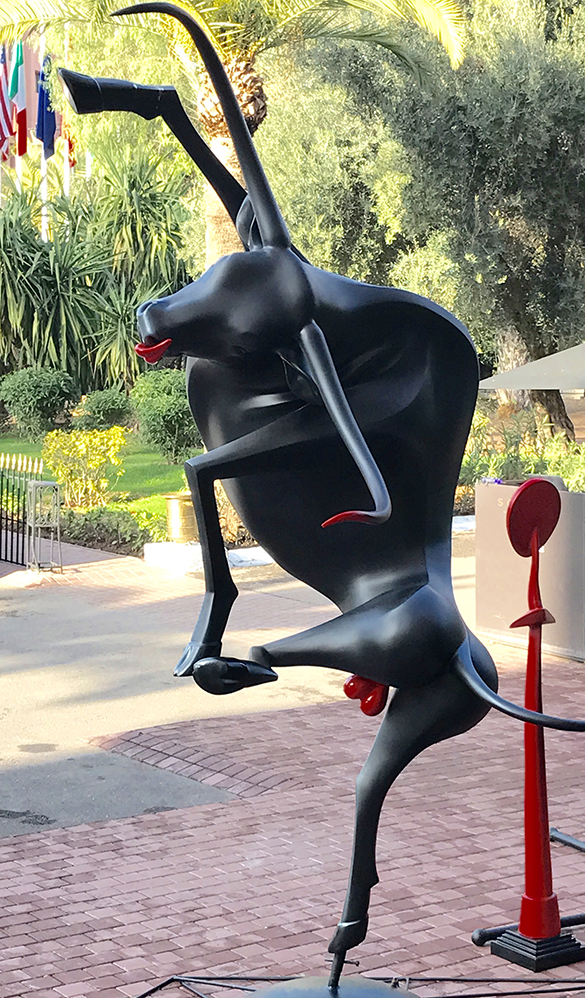I stroll through down-town Geneva. It is hot. Very hot. Every-language tourists swarm the luxury shrines to chocolate and watches. A stunning new bronze sculpture in Place de Longemalle stops me in my tracks. It is a young woman in hoody, cut-off denim shorts and trainers walking with confidence. She holds a smartphone. Like her living counterparts, she seems unaware of her allure or the conveniences brought by smartphone culture. She is constructed of horizontal segments re-stacked. The texture contrasts effectively with the smooth skin of the presumed model. Somehow, this sculpture captures the young woman of today. It is very beautiful and very gratifying.
I look around for the plaque that names the genius behind this work. Instead, I spot the same young woman only forty metres away. She has both feet firmly planted and her smartphone held up towards her other self striding to meet her. She has that small-screen look of concentration. Is she photographing her twin, taking a selfie, recording the street scene or checking her make-up? I am captivated by these works individually and as a pair. Finding them makes my day. I wander round them admiring the poise, youth and statement that the sculptor has accomplished here. Eventually, I find a little sign that tells me these are recent works of Andy Denzler from Zurich. They are presented by and just outside the Opera Gallery.
I did not grow up in the internet era nor even with a mobile phone. Denzler’s subject cannot possibly know existence without a smartphone. It is also her camera, her street map, her address book, her pen and paper, her mirror, her compass, her library, her photo album, her stereo, her shopping mall, her magazines, her cinema and much more besides. Her friends and friends’ friends, real and virtual, are connected, categorized and communicated with by Facebook, Twitter, Snapchat, Whatsapp and Instagram. As for all of my generation, what mobile technologies bring to humanity is both fascinating and intimidating. Were I to find myself in conversation with Denzler’s young woman, I’d be interested to know whether she could conceive of life before smartphones. And if I said something stupid like “Well, in my day, we didn’t have such technology.” I am certain she would simply look up from the screen for a second or two, look my squarely in the eye and say politely “But it’s not your day!”

